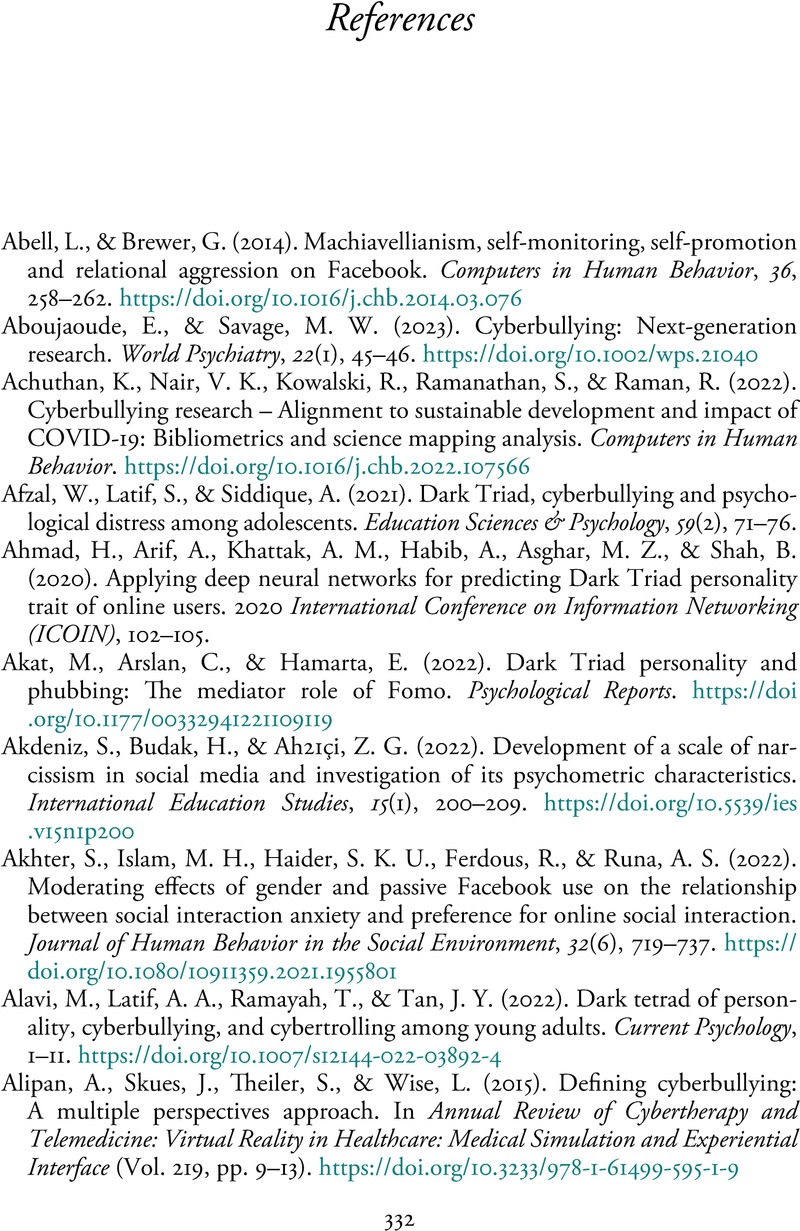Book contents
- The Cyber Predators
- The Cyber Predators
- Copyright page
- Dedication
- Contents
- Tables
- Preface
- Chapter 1 Dark Personalities and Cyber Misconduct
- Chapter 2 The Dark Triad/Tetrad and Social Networking Addiction
- Chapter 3 Dark Triad/Tetrad on Facebook and Other Social Networks
- Chapter 4 Dark Triad/Tetrad and Hate BehaviorsCyber Aggression and Cyberbullying
- Chapter 5 Dark Triad/Tetrad and Hate BehaviorsCyberstalking and Trolling
- Chapter 6 The Dark Triad/Tetrad Is above the Law Cybercrime
- Chapter 7 The Dark Triad/Tetrad and Romantic Relationships in Cyberspace
- Chapter 8 The Dark Triad/Tetrad and Workplace Cyber Deviance
- Chapter 9 Conceptual and Practical Implications
- References
- Index
- References
References
Published online by Cambridge University Press: 11 April 2024
- The Cyber Predators
- The Cyber Predators
- Copyright page
- Dedication
- Contents
- Tables
- Preface
- Chapter 1 Dark Personalities and Cyber Misconduct
- Chapter 2 The Dark Triad/Tetrad and Social Networking Addiction
- Chapter 3 Dark Triad/Tetrad on Facebook and Other Social Networks
- Chapter 4 Dark Triad/Tetrad and Hate BehaviorsCyber Aggression and Cyberbullying
- Chapter 5 Dark Triad/Tetrad and Hate BehaviorsCyberstalking and Trolling
- Chapter 6 The Dark Triad/Tetrad Is above the Law Cybercrime
- Chapter 7 The Dark Triad/Tetrad and Romantic Relationships in Cyberspace
- Chapter 8 The Dark Triad/Tetrad and Workplace Cyber Deviance
- Chapter 9 Conceptual and Practical Implications
- References
- Index
- References
Summary

- Type
- Chapter
- Information
- The Cyber PredatorsDark Personality and Online Misconduct and Crime, pp. 332 - 375Publisher: Cambridge University PressPrint publication year: 2024



